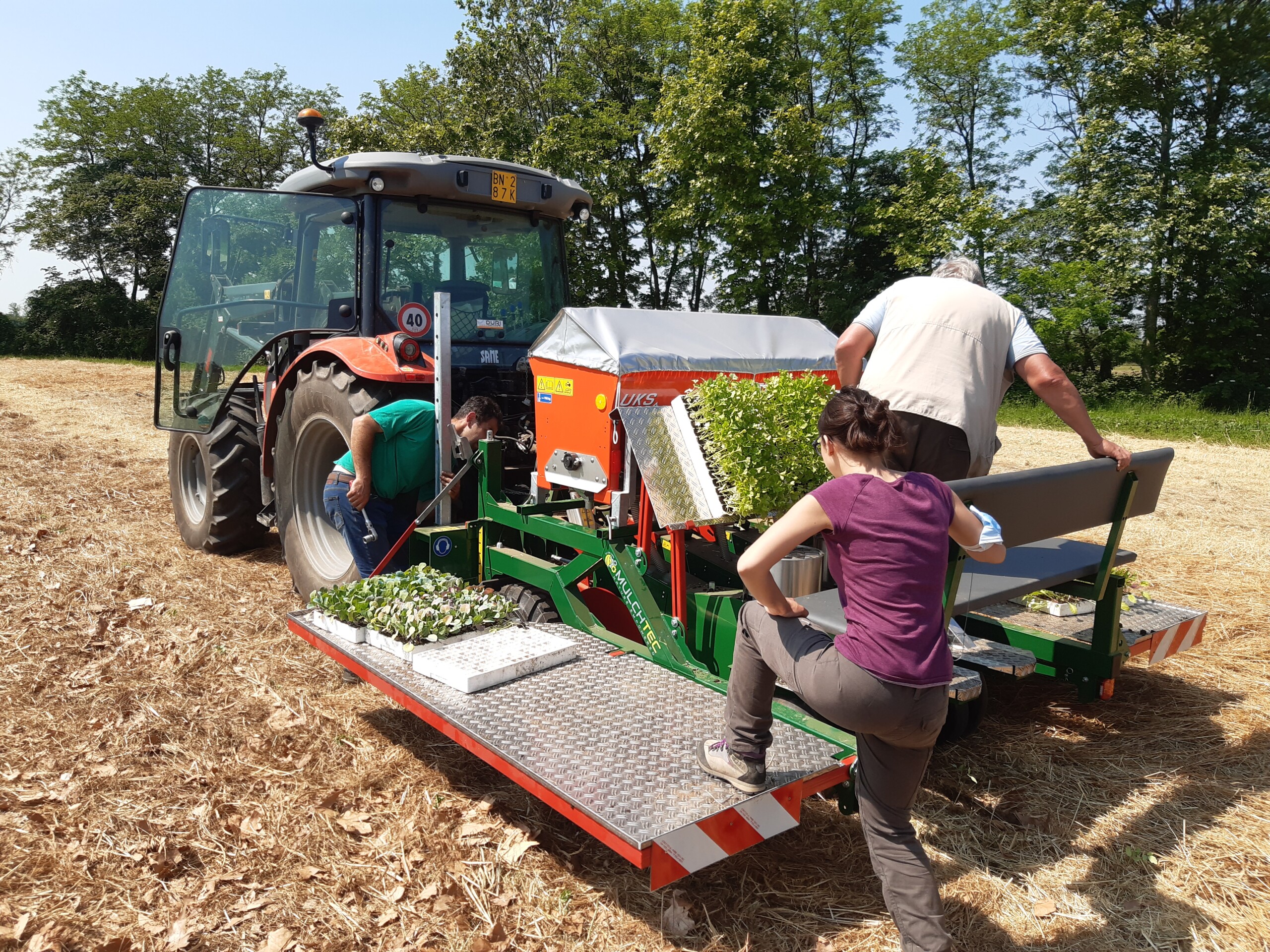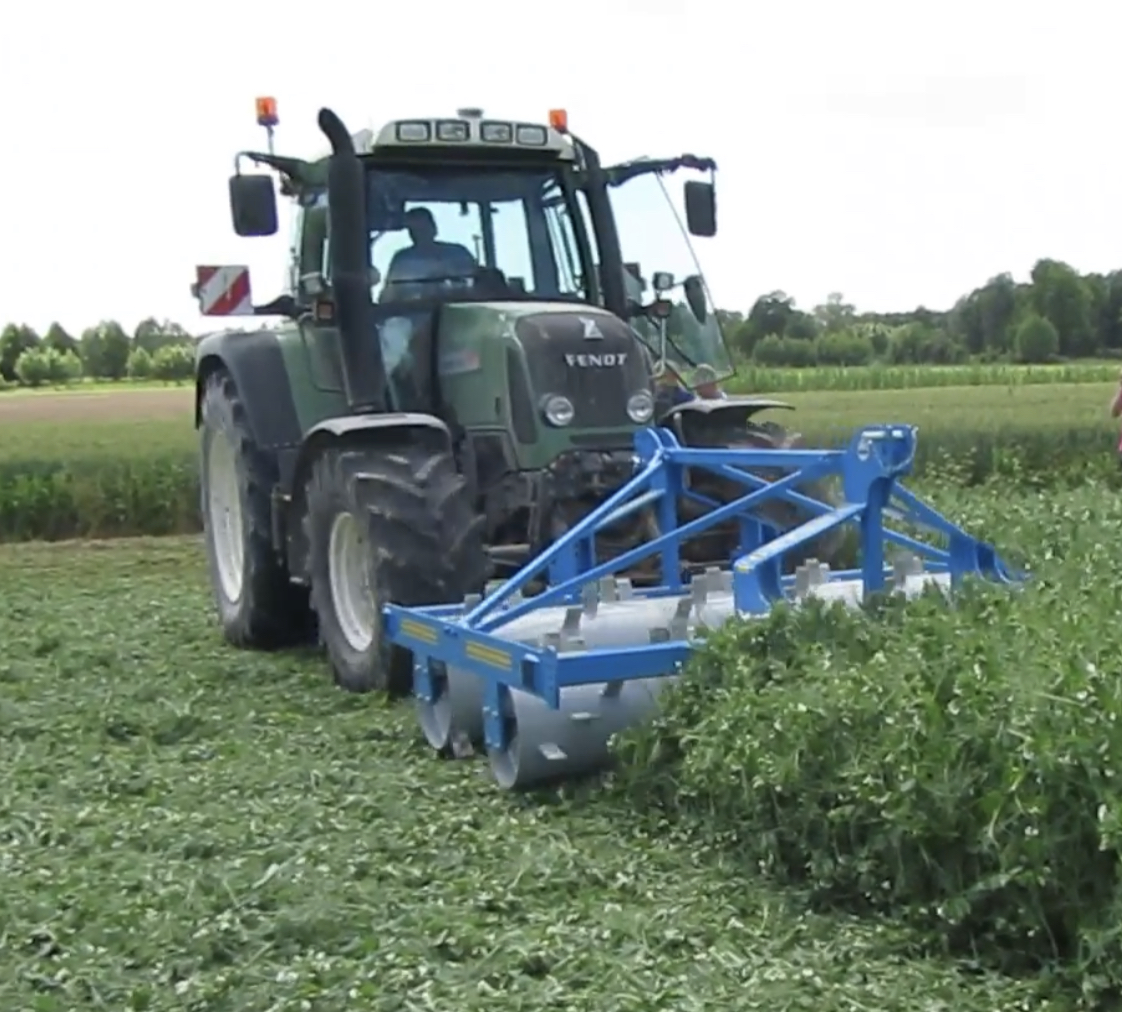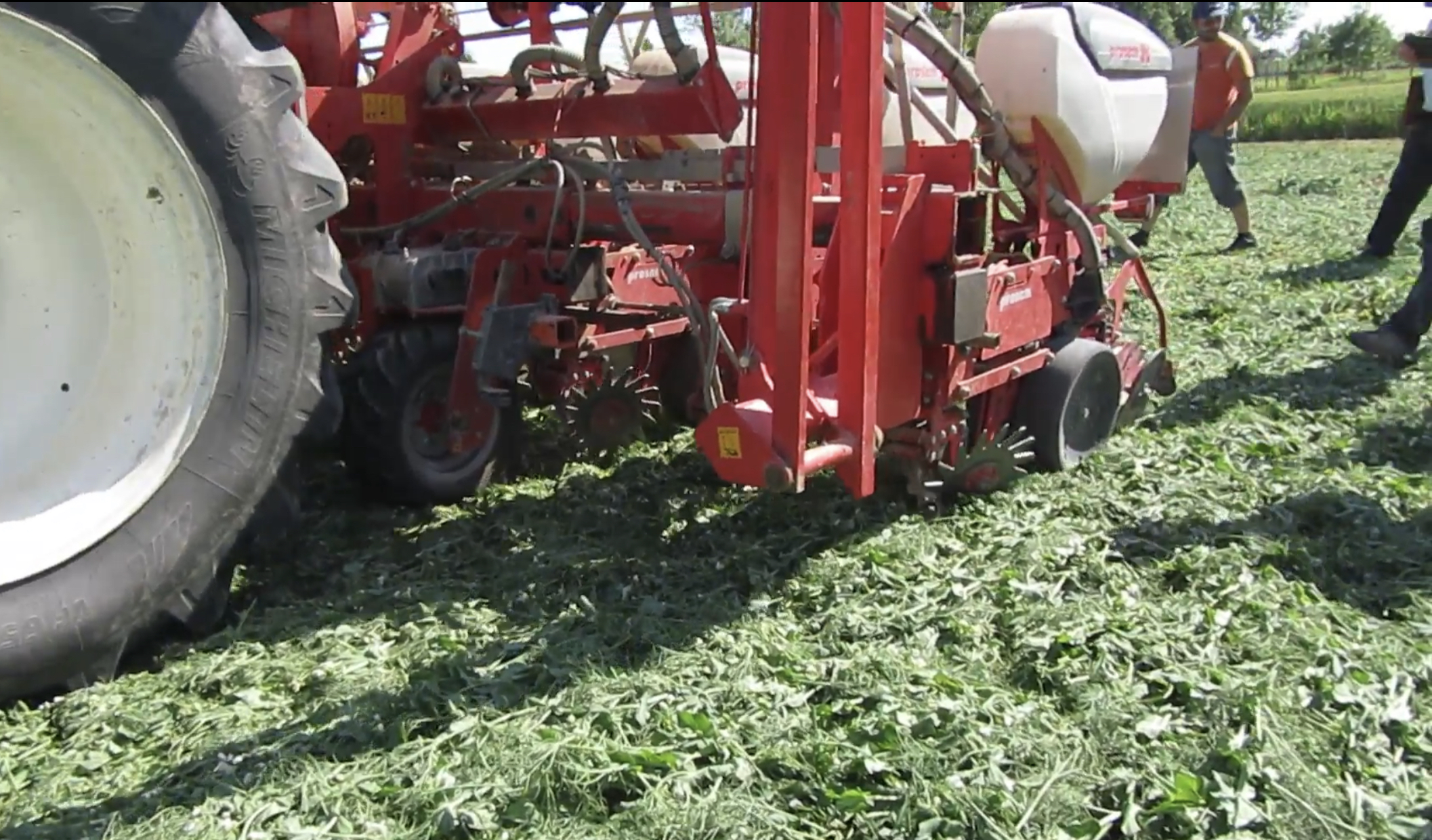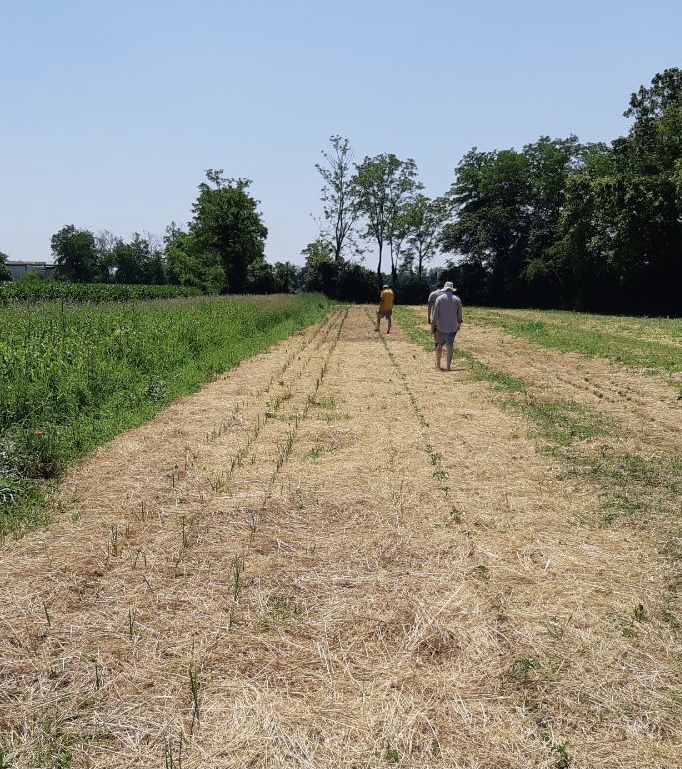Wat was de uitdaging/het probleem dat werd aangepakt??
Zodezaaien van akkerbouwgewassen en verplanten van groenten in de biologische landbouw en onkruidbestrijding.
Maïs is een van de moeilijkste veldgewassen als het gaat om onkruidbeheer. Het lage aantal planten per m2 en de relatief lange tijd die het gewas nodig heeft om het bodemoppervlak te bedekken bevorderen de groei van zomeronkruid en verhogen de waterverdamping.
Een ander uitdagend gewas in biologische systemen vanwege het lage vermogen om tijdens de groei met onkruid te concurreren, is soja. 2 naar 4 Schoffeldoorgangen met cameragestuurde stuursystemen zijn een optie, maar ze verhogen de productiekosten aanzienlijk. Bovendien, in de traditionele Italiaanse teeltgebieden, Irrigatie wordt een noodzaak om goede opbrengsten te garanderen. echter, niet alle gebieden kunnen tegen redelijke kosten worden geïrrigeerd.
Hoe heb je het probleem opgelost??
De genoemde problemen kunnen worden vermeden door maïs in een no-till-systeem in een mulch bodembedekkingsgewas te zaaien. Deze methode vereist mechanische beëindiging van het bodembedekkingsgewas dat aan het maïsgewas voorafgaat met een rolkrimpmachine, en, voor het zaaien van maïs, een no-till-planter is nodig. De mulchafdekking zal onkruid onder controle houden tijdens de initiële groeifase van het maïsgewas en het waterverlies door verdamping verminderen. Als peulvruchten worden gebruikt, belangrijke hoeveelheden stikstof kunnen worden opgevangen.
In een Noord-Italiaanse context, een velderwtenbedekkingsgewas werd getest als mulch voor de maïsoogst. De rolkrimpmachine beëindigde effectief het dekgewas (15 t per ha natte biomassa). echter, de mulch duurde niet lang genoeg, waarschijnlijk door een smalle C/N-verhouding en biologisch actieve bodem. De maïsplanten hadden niet genoeg tijd om zich te ontwikkelen en het hele bodemoppervlak te beschaduwen. Onkruid begon door de ontbindende mulch te ontkiemen. Voor de testomstandigheden, dit bodembedekkingsgewas is ongeschikt gebleken als langdurige mulch om onkruid te bestrijden. Er werd geen bemesting en geen irrigatie toegepast. De maïsopbrengsten bedroegen ca 5 t voor ha.
Als het om soja gaat, Er werden verschillende methoden voor het zaaien in mulch getest: A) No-till-zaaien in een staand dekgewas, vervolgens het dekgewas aanrollen met een rolkrimpmachine; B) No-till-zaaien in een staand dekgewas, maak vervolgens mulch door er met een dorsvlegelversnipperaar overheen te gaan; C) No-till-zaaien in een staand dekgewas, en geen vervolgprocedures; D) Mulch verkregen met een klepelversnipperaar, daarna no-till-zaaien met een tandenluchtzaaimachine; en E) Rolkrimper gevolgd door no-till-zaaien met een tandenluchtzaaimachine. Al deze methoden, behalve methode B, hebben goede resultaten laten zien op het gebied van onkruidbestrijding, en behoud van grondwater (zelfs tijdens de droge zomer in 2016). De opbrengsten waren vergelijkbaar met die van de bewerkte velden, behalve methode C.
Dus, als oplossing, sojabonen kunnen in de mulchbedekkingsgewassen worden genaaid in een no-till-systeem. De mulchafdekking onderdrukt het onkruid tijdens de initiële groei van het gewas en vermindert de hoeveelheid water die verloren gaat door verdamping.
Wat zijn de succesfactoren bij het oplossen van het probleem??
Technisch gezien, Bedek gewassoorten, Tijdstip, en beschikbaar nutriëntenbeheer. Op adviesgebied, AIAB FVG (het regionale merk van de Italiaanse Vereniging voor Biologische Landbouw) werkt om de capaciteitsontwikkeling onder biologische boeren in Noordoost-Italië te vergemakkelijken via een team van gekwalificeerde biologische landbouwadviseurs. Deze adviseurs verspreiden momenteel de roller-crimper-techniek in akkerbouw- en groentegewassen.
Onverwachte mislukkingen, indien van toepassing.
Timing is van cruciaal belang voor het beëindigen van de dekkingsgewas en de beschikbaarheid van rolkrimpers kan een knelpunt vormen.
Les geleerd.
- Het bodembedekkersgewas moet net zo nauwkeurig worden gezaaid als het hoofdgewas. Slechte gewasopstanden resulteren niet in goede mulchsoorten.
- De effectiviteit van de mulch hangt af van de hoeveelheid mulchbiomassa. echter, meer biomassa betekent ook meer moeite voor de planter.
- Op bodems met een laag organische stofgehalte, Extra stikstofbemesting moet worden overwogen.
- Beheer van dekgewassen en tijd zijn van cruciaal belang om vertrouwd te raken met de techniek en om een grotere bekendheid onder boeren te garanderen.
Welke rol speelt de adviseur of adviesdienst binnen uw praktijkcasus??
De AIAB FVG-adviesdienst was essentieel om de techniek door de boeren te laten waarderen en om een grotere acceptatie te bevorderen.
Kan jouw aanpak worden overgedragen en/of aangepast voor andere innovatie-uitdagingen en regio's??
Ja
Feedback van studenten door middel van regelmatige enquêtes moet worden aangevuld met regelmatige interactieve processen om tegemoet te komen aan de uiteenlopende behoeften van leerlingen in een crisis- of gemanaged veranderingsproces 1 naar 5
3
Voor het delen van de ervaringen met de goede praktijken, Neem dan contact op met Stefano Bortolussi (Stefano[Bij]aiab.FVG.it)




